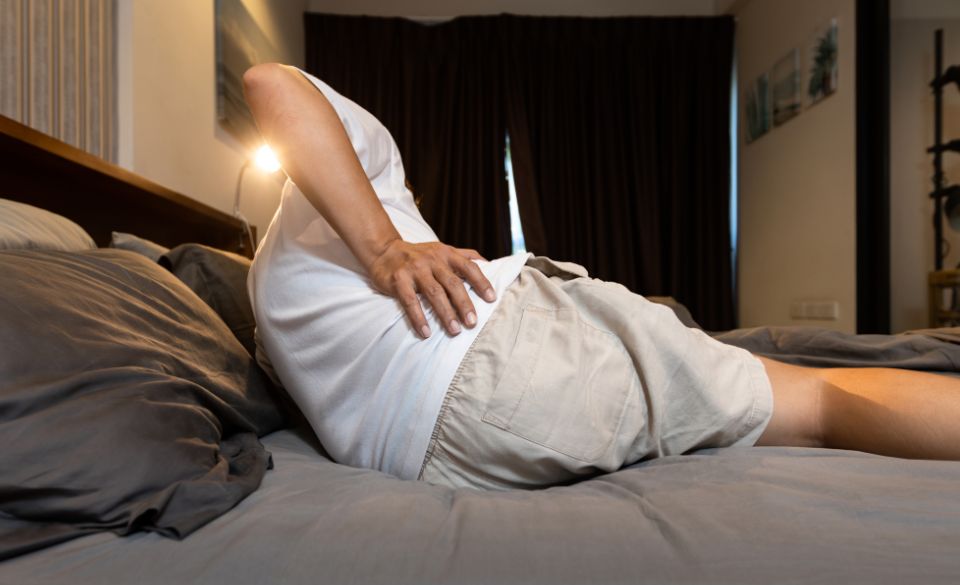
Why Do I Get Sore Hips After Running?
Page Contents
Have you ever experienced soreness in your hips after a run? If so, you’re not alone. Many runners often find themselves dealing with hip discomfort and wonder why it occurs. In this blog post, we’ll explore the potential causes behind hip soreness after running and provide some insights on how to prevent and manage it. So let’s dive in and unravel the mystery of sore hips post-run!
Understanding Hip Soreness: Causes and Factors
Overuse and Muscular Imbalances
One of the most common reasons for hip soreness after running is overuse. When you engage in repetitive movements like running, the hip muscles and surrounding tissues can become strained and fatigued, leading to discomfort and soreness. Overuse injuries often occur when you increase your running mileage or intensity too quickly, without allowing your body enough time to adapt.
Additionally, muscular imbalances can contribute to hip soreness. If certain muscles around the hips, such as the hip flexors or gluteal muscles, are weaker or tighter than others, it can cause uneven stress and strain on the hip joints. Imbalances in muscle strength and flexibility can disrupt the biomechanics of your running stride, leading to hip discomfort and soreness.
Poor Running Form and Technique
Running with improper form or technique can also be a culprit behind hip soreness. For example, overstriding (landing with your foot too far in front of your body) or excessive hip rotation can place excessive stress on the hip joints and muscles, leading to soreness. It’s important to pay attention to your running mechanics and work on maintaining proper form to minimize the risk of hip discomfort.
Weak Core and Stabilizing Muscles
Your core muscles and stabilizing muscles play a significant role in maintaining proper alignment and stability during running. Weak core muscles can result in excessive movement and instability in the hip joints, leading to increased stress and soreness. Incorporating exercises that target the core, such as planks and bridges, can help strengthen these muscles and reduce hip discomfort.
Pre-existing Conditions and Injuries
In some cases, hip soreness after running may be attributed to pre-existing conditions or injuries. Conditions like hip bursitis, tendinitis, or arthritis can cause inflammation and discomfort in the hip area, which can be aggravated by running. If you have a history of hip injuries or underlying conditions, it’s important to seek medical advice to understand how to manage your symptoms and continue running safely.
Prevention and Management Strategies
Gradual Progression and Cross-training
To prevent hip soreness from overuse, it’s essential to allow your body enough time to adapt to the demands of running. Gradually increase your mileage and intensity, giving your muscles and connective tissues sufficient time to strengthen and adapt. Incorporating cross-training activities, such as swimming or cycling, can also help reduce the repetitive stress on your hips while maintaining cardiovascular fitness.
Strength and Flexibility Training
Targeted strength and flexibility exercises can address muscular imbalances and weaknesses that contribute to hip soreness. Focus on exercises that engage the hip flexors, glutes, and core muscles. Incorporate exercises like lunges, squats, hip bridges, and clamshells into your routine to strengthen and stabilize the hip area. Additionally, regular stretching, particularly for the hip flexors and glutes, can help improve flexibility and reduce tension in the hips.
Proper Running Form and Technique
Pay attention to your running form and technique to minimize unnecessary stress on your hips. Aim for a shorter stride length, landing with your foot underneath your body rather than in front. Engage your core and maintain an upright posture to promote proper alignment. If you’re unsure about your running form, consider working with a running coach or physical therapist who can provide guidance and feedback.
Rest and Recovery
Allowing your body sufficient rest and recovery is crucial for preventing overuse injuries and reducing hip soreness. Incorporate rest days into your training schedule to give your muscles and joints time to repair and rebuild. Listen to your body and take breaks when needed, especially if you experience persistent hip soreness or pain.
Seek Professional Guidance
If you consistently experience hip soreness or if the discomfort worsens over time, it’s advisable to seek professional guidance from a sports medicine specialist or physical therapist. They can evaluate your running mechanics, assess any underlying conditions or injuries, and provide personalized recommendations and treatment strategies to address your hip soreness.
Best Hip Exercises For Runners
As a runner, having strong and stable hips is essential for maintaining proper form, improving performance, and reducing the risk of injuries. The hips play a crucial role in providing stability, power, and balance during running. By incorporating targeted hip exercises into your training routine, you can strengthen the muscles around the hips, improve your running mechanics, and enhance overall performance. Here are some of the best hip exercises for runners:
1. Clamshells
Clamshells target the gluteus medius, a key muscle responsible for hip stability and proper alignment during running.
– Start by lying on your side with your legs bent and stacked on top of each other.
– Keeping your feet together, lift the top knee while keeping the feet in contact with each other.
– Slowly lower the knee back down.
– Perform 2-3 sets of 10-15 repetitions on each side.
2. Hip Bridges
Hip bridges activate the glutes and hamstrings, strengthening the posterior chain and improving hip extension power.
– Lie on your back with your knees bent and feet flat on the ground, hip-width apart.
– Press your heels into the ground and lift your hips up, squeezing your glutes at the top.
– Lower your hips back down to the starting position.
– Perform 2-3 sets of 10-15 repetitions.
3. Lateral Band Walks
Lateral band walks engage the hip abductors and external rotators, helping to stabilize the hips and improve lateral movement.
– Place a resistance band around your ankles and assume a slight squat position.
– Take small steps to the side, maintaining tension on the band.
– Perform 2-3 sets of 10-15 steps in each direction.
4. Single-Leg Squats
Single-leg squats target the quadriceps, hamstrings, and glutes, promoting balance, stability, and strength in the hips.
– Stand on one leg with the other leg slightly lifted in front of you.
– Slowly lower your body into a squat position, keeping your knee in line with your toes.
– Push through your heel to return to the starting position.
– Perform 2-3 sets of 8-12 repetitions on each leg.
5. Fire Hydrants
Fire hydrants activate the glutes, hip abductors, and hip external rotators, helping to improve hip stability and mobility.
– Start on all fours with your hands directly under your shoulders and knees under your hips.
– Lift one knee out to the side while keeping your hips and shoulders stable.
– Lower your knee back down.
– Perform 2-3 sets of 10-15 repetitions on each leg.
6. Standing Hip Abduction
Standing hip abduction exercises target the hip abductors and glutes, improving lateral stability and preventing hip drop.
– Stand with your feet hip-width apart and slightly bend one knee.
– Lift the other leg out to the side, keeping it straight and maintaining balance.
– Slowly lower your leg back down.
– Perform 2-3 sets of 10-15 repetitions on each leg.
Remember to start with a weight or resistance level that challenges you but allows for proper form. As you progress, you can increase the resistance or repetitions to continue challenging your hips and further improve their strength and stability.
In Conclusion: Addressing Hip Soreness for a Smooth Run
Hip soreness after running can be attributed to a variety of factors, including overuse, muscular imbalances, poor form, and pre-existing conditions. By understanding the potential causes and implementing preventive strategies, you can reduce the likelihood of hip discomfort and enjoy a smoother running experience. Remember to gradually increase your training, strengthen your core and stabilizing muscles, maintain proper running form, and prioritize rest and recovery. If persistent or worsening hip soreness occurs, consult with a healthcare professional for a thorough evaluation and personalized guidance. With the right approach, you can keep those hips happy and continue running strong!



